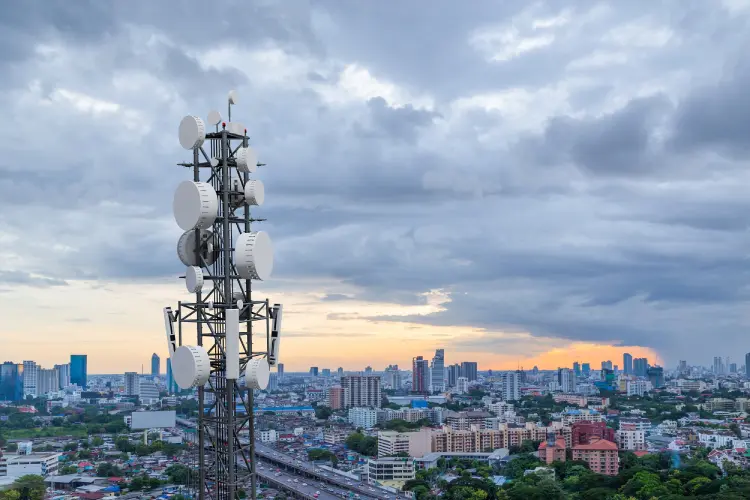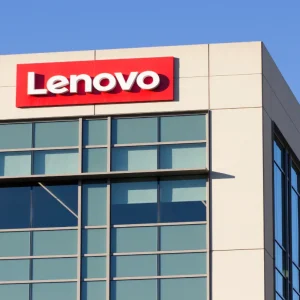
As the communications industry begins to move towards an open technology model, open radio access network, or Open RAN, standards are starting to grow in importance and beginning to catch the interest of some of the sector’s biggest players. Network operators hope Open RAN can underpin affordable private 5G networks for businesses, but with the open ecosystem still in its infancy, the relationship between Open RAN and 5G must be symbiotic to allow both to develop and thrive.
Though Open RAN itself is not a new concept, it has been showing signs of taking off in 2021. In January Europe’s big four telcos – Deutsche Telekom, Orange, Telefonica and Vodafone – signed a memorandum of understanding which agreed to promote the deployment of Open RAN. Vodafone has been one of the most enthusiastic proponents of Open RAN, and recently announced a partnership with chipmaker Qualcomm which will see the companies working together to develop and publish a set of Open RAN reference designs. Established and emerging and network infrastructure vendors will be able to use these as a starting point when developing Open RAN hardware and software for “high-performance, virtualized, interoperable, and modular 5G networks at scale.” The first designs are likely to be available later this year.

Santiago Tenorio, head of network architecture, Vodafone, said Open RAN standards could hold the key to greater interoperability in 5G. “Global supply chains need a diverse and vibrant vendor ecosystem to keep them moving in the event of a product shortage or a single supplier having difficulties,” he said. “Open RAN provides greater supplier diversity by allowing many more small vendors to compete on the world stage.”
What is open RAN?
The radio access network is one of the key components of wireless communications networks such as 5G, providing the infrastructure which underpins the network and enables software and devices to communicate with each other. RAN technology is traditionally provided by big hardware companies such as Nokia or Ericsson, while Huawei was also a leading player in the 5G RAN space before it was rendered a pariah by the US and UK authorities due to its links with the Chinese government.
“The RAN system is the most expensive part of any network,” says Vassilis Seferidis, CEO of Zeetta, a company that builds software for 5G networks and a member of the UK5G innovation network. “It’s hardware that needs to be produced and deployed, so if that environment is proprietary then the cost remains high.” By contrast, Open RAN provides a set of open standards that developers can use as a starting point for their products. “What we’re experiencing in the networking environment at the moment is the democratisation of the industry, similar to what happened in computing a few decades ago,” Seferidis says. “It’s known as the open networking movement, and Open RAN is part of that.”
Why do 5G operators care about Open RAN?
Driving down RAN costs could be key to persuading more businesses to set up private 5G networks, and with this in mind network companies such as Vodafone are keen to promote the use of Open RAN. “Entering a space like the RAN anew is challenging for anyone; you have to develop a lot of institutional technological knowledge,” says Ed Gubbins, principal analyst at GlobalData, who covers the telecoms sector. “Add to that the fact that the Open RAN ecosystem is still at a relatively early stage of development, and it’s clear that anyone venturing into the space will have a lot to learn and face a lot of hurdles.” The Vodafone and Qualcomm partnership is designed “to make this process easier for prospective vendors so that they can accelerate this ecosystem,” he adds.
Indeed, though a report from ABI Research suggests that by 2030 there could be up to 205.5 million Open RAN-based devices shipped for private indoor networks such as 5G networks, at a value of $39.8bn, at the moment it is not widely deployed. Vodafone has pledged to install the technology at 2,600 network sites across the UK over the next six years as it replaces now-banned Huawei equipment.
The reference designs that Vodafone and Qualcomm are collaborating on are an important step in this process, Gubbins says. “They will help guide Open RAN vendors through the process,” he explains. “And because Vodafone is an operator, and one that has shown willingness to deploy Open RANs, this move gives vendors a reliable sense of real-world operator requirements and preferences, so they have more assurance that operators will invest in solutions based on these designs.”
Operators can see the potential benefits of Open RAN development, Seferidis says. “Price will always be the main driver from the operator’s point of view because they want to get those costs down,” he says. “But if you can get more players into the market and more brains thinking about these issues it also encourages innovation.”
How Open RAN can benefit businesses
While 5G’s roll-out across consumer networks has been substantial, its use in business networks is not yet widespread, with Deloitte estimating “over 100” businesses globally had started experimenting with private networks by the end of last year. Seferidis says there is enthusiasm for 5G in the business community and that private networks can bring substantial benefits. “A private 5G network gives you more control over your network, which means you can control the latency between two devices and prioritise who gets more bandwidth and at what point in time,” he says.
He believes Open RAN has an important role to play as these deployments increase. “With Open RAN you can enable more suppliers to enter the market,” he says. “That makes it easier for businesses because it’s difficult to negotiate with big companies like Ericsson – they aren’t going to give you five minutes of their time. If you can go to a smaller supplier then developing a 5G solution for an enterprise becomes much easier. This diversification is what Open RAN offers.”
Does Open RAN need 5G more than 5G needs Open RAN?
Development of Open RAN is not without its drawbacks, Seferidis says. “Developing standards doesn’t solve the problem of who is responsible for what happens if something goes wrong with the RAN,” he says. “The standards also need to be well defined, because at the moment there are still a lot of variants of standards. My expectation would be that the market will eventually converge to whatever works, and one or two of these variants will become dominant.”
Though Vodafone and Qualcomm’s announcement suggests Open RAN can be a driver of 5G adoption, Gubbins believes the relationship is the other way around. “5G is already proliferating without Open RAN, and it’s going to take a while for Open RAN deployments to spread,” he says. “One question is what the inflection points will be for Open RAN adoption and deployment?”
Gubbins explains that some operators are setting up private, standalone 5G networks that don’t use Open RAN, and despite the industry’s commitments to Open RAN he expects it to take a generally cautious approach to the technology in the short term. “For some operators, who deploy standalone 5G later on, those deployments could still represent that kind of inflection point for Open RAN,” he adds. “But I think in general, operators are going to be conservative with Open RAN deployments initially and in the near term, trying them out in limited areas to test them and gain more experience with them.”






